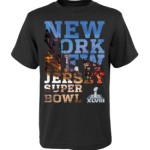I had a little downtime the other night, and a friend’s Facebook post caught my eye: “What state do you actually belong in?” Thinking the BuzzFeed quiz would be a fun, quick distraction, I clicked through. And then I clicked, and clicked and clicked.
Before I knew it, I fell down the BuzzFeed rabbit hole. I spent way more time on the site than I planned to, and even read articles I didn’t know I was interested in. (See 18 Celebrities You Didn’t Know Were Really Short) Oh, and I apparently belong in Iowa, in case you’re curious.
So why did I spend so much time on BuzzFeed? The power of headlines, my friends. BuzzFeed’s style of headline writing is so darn sticky, I couldn’t resist clicking on article after article. I’m not the only one, either. BuzzFeed gets 130 million unique visitors a month—that’s huge! The best part is that people aren’t just reading, they’re sharing it, too, and it’s largely due to those headlines that suck you in.
Compelling headlines can help increase the open and click-through rates of the marketing emails you send, and—if they’re good enough—can motivate your customers to become brand evangelists. In BuzzFeed spirit, here are the four keys to writing attention-grabbing headlines:
- Numbers. People can’t resist articles that promise to be quick, scannable, single-serve pieces.
- Lists. Numbered headlines all but promise that the content will be delivered in list format, which goes back to quick and scannable. If your clients think your content could be too long, they won’t click through.
- Direct. BuzzFeed tells you exactly what you can expect to find when you click through, and for the most part, they don’t bait-and-switch.
- Tight. Their headlines are short. Yours should be, too.
If you still don’t believe the power of a tight, compelling headline, try some A/B testing next time you send out an email marketing piece, and let me know how it goes. I think you’ll like the results. Want to talk more (or share which state you belong in)? Shoot me an email—I’d love to talk shop.
– BML




